
|
Global Industrial Marine Coating
All Types Of Blasting & Painting Works |
|
|
Global Industrial Marine Coating Cherai, Ernakulam Kerala, INDIA Pin - 682509 |
|
|
+91 9947 78 0065 +91 9496 33 5865 |
|
|
manager@globalimc.in info@globalimc.in |
0 +
0 +
0 +
0 +
Welcome to Global Industrial Marine Coating (GIMC). GIMC was established in the year 2010 to provide painting/coating services to the marine, industrial and civil sectors. Painting/coating in the marine, industrial and civil sectors is a job that requires years of experience and great skill. This is where GIMC comes in with an immense wealth of knowledge in the relevent field. The owner of GIMC, Mr. Nigheesh E M has unmatched skill in handling the operations related to painting/coating. Before founding GIMC in 2010, he worked as Site Manager at international level for painting department in Dubai Dry Dock and Qatar Dry Dock and holds painting experience in GCC country oil and gas industrial sector. His total Gulf experience spans over 12 years.
Our Vision

Experience

Best Service

Global Industrial Marine Coating (GIMC) has been at the forefront of providing painting/coating services to various sectors including marine and industrial sectors. GIMC has unmatched expertise in the field of surface preparation using various blasting operations conforming to industry and safety standards. Scope of our work includes De-rusting, Chipping, Scraping, Power Tool Equipment and Sand Blasting with quality surface preparation. Power Tooling standards we follow are
ST-1 : Power Brushing and Cleaning
ST-2 : Loose paint removal and local cleaning. Power-brushing, de-rusting, flash point removal, grinding, sanding, buffing.
ST-3 : Complete de-rusting with quality surface preparations and painting with required coatings.
We also provide labor supply services (Helpers and Blasters).
Before the process of painting/coating commences, it is advisable to clean the surface carefully and thoroughly. If there are products of corrosion reactions and other contaminants on the substrate and paint applied over them, the adhesion of the coating and thus the coating's life would be far from satisfactory. Surface preparation typically involves removing these contaminants and in some instances increasing the area available for adhesion by roughening up the substrate. A good surface preparation grade (degree of cleanliness) along with a suitable surface profile can give 10 years life from a typical four coat paint system. So the two factors need to be considered when inspecting a surface preparation are as follows
Degree of Cleanliness
Surface Profile (Degree of Roughness)
Depending on the variations in cost, efficiency, ease and suitability, surfaces can be prepared for paint application in several different ways like the following.
Dry Abrasive Blast Cleaning
Water Blasting
Hand and Power Tool Cleaning
Flame Cleaning
Pickling
Vapour Degreasing
Weathering
One of the common procedure prior to painting is surface preparation. Surface preparation ensures that there are no contaminants on the surface upon which painting is to be done. Several methodologies are used for surface preparation and they are as follows
H P Washing
L P Washing
Chipping
Chemical Cleaning
Fresh Water Moping
Ball Hammering
Scraping
Emery and Wire Brushing
Power Tooling With Machine (with standards ST 1, ST 2, ST 3)
New Plate Copper Blasting
Sweeping and Spot Blasting
Old Plate Blasting
Sea Growth Removing
Cleaning etc.
Blasting is a process where small angular or spherical particles are propelled at a substrate by compressed air, mechanical high-speed rotating wheels or water pumps. This process is widely used because it is efficient, economical and fast.
Dry abrasive blast cleaning involves compressing air and forcing it along a hose and out of a small aperture called a nozzle. A pressure of 100 psi results in the air exiting the nozzle at approximately 450 mph. If abrasive are mixed in with the air and travel at the same speed, they will carry a lot of work energy. This energy is used in chipping away mill scale and other detritus from the substrate.
It is not permitted to use sand. SI 1657 states that any mineral used as an abrasive must release less than 1% free silica on impact. COSHH REGS does not allow the use of sand containing silica for dry blasting. Sand itself is perfectly safe, but shattering on impact releases silica which can be inhaled.
Although the name implies metallic content the amount of copper in the structure is extremely minute. Minerals smelted with the copper liquefy and form a protective cover over the molten copper to prevent reaction with the atmosphere like slag on a weld.
A natural mineral classed as being "of a diamond type hardness" can be either expendable or recyclable. If the situation justifies, cleansing units are available to extract contamination so that the material can be reused, usually up to three times. Doesn't shatter on impact but does suffer some "wear" supplied in grit form.
In this context, steel and iron are both metallic. Cast steel grit being the softer of the two tends to round off on impact and loses its sharp edges. Angular chilled iron chips off small slivers on impact to produce sharp cutting surface on its next cycle. The finings so produced are extremely abrasive and cause extreme wear on moving parts of the recovery system.
Shot is spherical and doesn't shatter. When supplied the practices are virtually uniform in size and shape (not a working mix) but like the grit they wear down slowly in size. Regular addition of new abrasive as with grit, will then maintain a working mix. The particles are worn down eventually to finings and are drawn out of the system during cleansing.
A mix of shot and grit results in a more uniform profile. The grit cuts the profile and the shot being unable to enter the troughs produced controls the peak height and so greatly reduces the number of rogue peaks. A rogue peak is one which is well proud of the acceptable profile range and if painted over due to the contraction of the paint, will leave bare metal in contact with the atmosphere, thus allowing corrosion to occur. When rogue peaks are in concentrated area the effect is of a rash, hence rust rashing or rust spotting.
Site Blasting is normally carried out using expendable abrasives and open blasting systems. Open blasting systems operate using
Compressor
A pot containing the abrasives
Vapour traps for oil and water
A hose usually carbon impregnated
A nozzle
A deadman's handle for operator safety
Surface preparation methods using water are more environmentally friendly than open blasting and also from the safety aspect, spark free. They are ideal for removal of soluble salts, sulphates and chlorides (the hygroscopics) although complete removal needs high pressure ranges. Wet blasting methods are also ideal for removing layers of toxic materials eg. red lead, calcium plumbate and zinc chromate primers. These materials are safe during application but removal by abrasion results in fine particulate matter passing into the air which can then be inhaled and passed into the blood stream.
This system operates at about 20,000 psi and uses abrasives either gravity fed into the system, suction fed or mixed as a slurry. Marine growths eg. barnacles are easily removed with this system and it is often used in dry-docks on ship hulls. Because of the abrasives a profile is cut using this method.
Using pure water, usually out of a rotating head giving alternating pencil and fan jets. Water usages is about 60 litres per minute. To work efficiently the head must be near to the surface within 25 to 35mm and as the distance increases the efficiency reduces until at approximately 250mm only loose and flaking material will be removed.
Blasting is one of the common method used to prepare a surface to make it conducive for painting. Blasting is widely used because it is efficient, economical and fast. There exists several abrasive blasting grades and the common ones we provide are as follows.
SA - 1 Grade
Light Blast Cleaning

SA - 2 Grade
Thorough Blast Cleaning
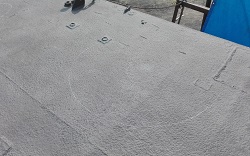
SA - 2.5 Grade
Very Thorough Blast Cleaning
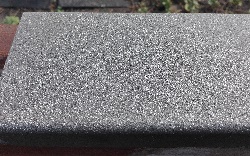
SA - 3 Grade
Blast Cleaning To Visually Clean Steel

Global Industrial Marine Coating (GIMC) has been providing painting and coating services to the marine, industrial and civil sectors for the past several years. Painting is the practice of applying paint, pigment, color or other medium to a solid surface (support base). The medium is commonly applied to the base with a brush, but other implements, such as rollerbrush, airspray, airless sprays etc, can be used. A coating is a covering that is applied to the surface of an object, usually referred to as the substrate. The purpose of applying the coating may be decorative, functional, or both. The coating itself may be an all-over coating, completely covering the substrate, or it may only cover parts of the substrate. Whatever be your requirement, GIMC is fully equipped to meet it.
Air Spray
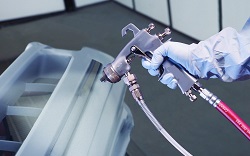
Airless Spray

Roller Brush

Paint Brush
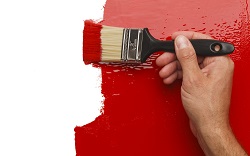
Global Industrial Marine Coating (GIMC) provides painting/coating services in various sectors. Common areas where we provide our services are marine, industrial, civil etc. We provide labor services (blasters and helpers) too. Apart from these, we provide scaffolding facilities also.
Marine Services
Industrial Services

Macrotech Coating
House Painting

Scaffolding

Labor Supply

Take a visual tour through our works.


































